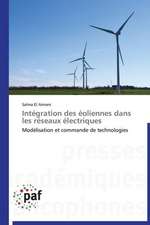Direct Current Generators
Autor A. Bhatiaen Limba Engleză Paperback
Preț: 83.61 lei
Nou
Puncte Express: 125
Preț estimativ în valută:
16.00€ • 17.39$ • 13.45£
16.00€ • 17.39$ • 13.45£
Carte disponibilă
Livrare economică 31 martie-14 aprilie
Preluare comenzi: 021 569.72.76
Specificații
ISBN-13: 9781508497028
ISBN-10: 1508497028
Pagini: 52
Dimensiuni: 216 x 279 x 3 mm
Greutate: 0.15 kg
Editura: CREATESPACE
ISBN-10: 1508497028
Pagini: 52
Dimensiuni: 216 x 279 x 3 mm
Greutate: 0.15 kg
Editura: CREATESPACE

























